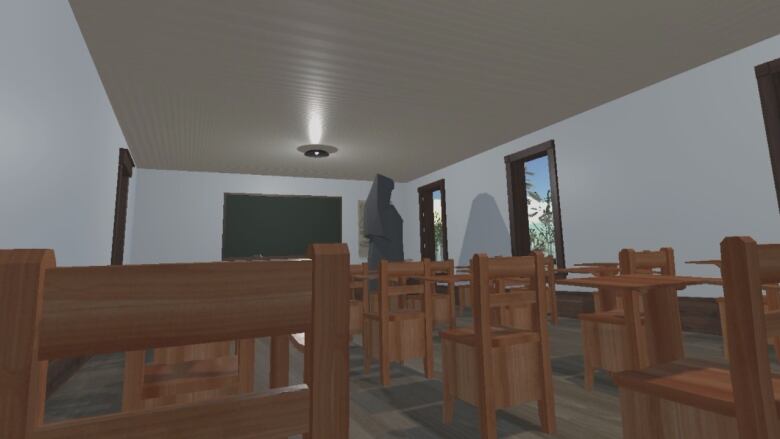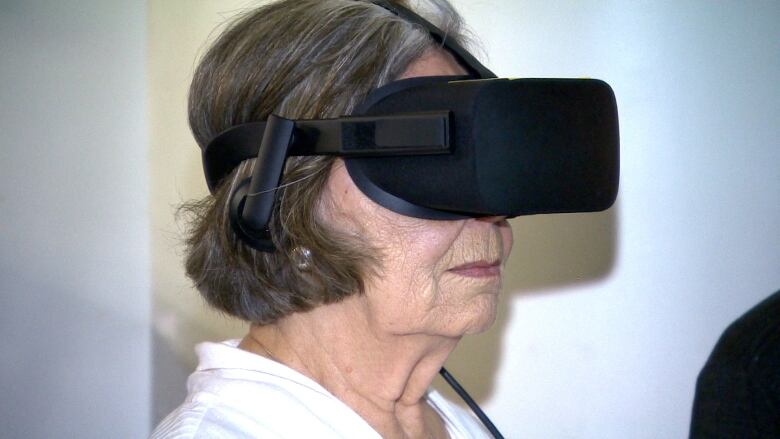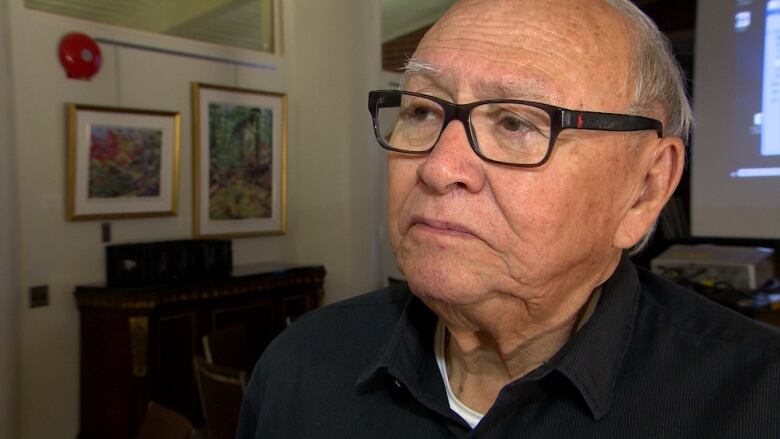Virtual reality allows users to experience a Canadian residential school
The project is set to be used as a teaching tool, means of preserving survivor accounts
A Winnipeg based project using virtual reality technology takes users back in time to experience Canadian Indian Residential Schools, in hopes of creating a greater understanding of what survivors went through.
"To place people, immerse them in the space of residential school, as they hear the [survivor's] story in order to provide them a deeper sense of what happened there," said Andrew Woolford, co-director of the project called Embodying Empathy.
Survivors, along with family and friends, gathered at the University of Manitoba Monday evening to try out the technology before it undergoes further testing.

"We hope it will be useful for enhancing and amplifying what the survivors are already doing [by sharing their stories]," said Woolford.
The three-dimensional experience that tookfive years to developtakes users through a replica of the Fort Alexander Residential School that operatedon theSagkeengFirst Nation, nearPowerviewMan., from 1906 to 1970.

As the user goes through the different rooms of the school, they hear survivors recount their memories of being there.
Woolfordsaid the technology allows survivors to share storiesthat may be too personal or traumatic to share in person or in front of a classroom.
The group has secured funding to take it to 10 high schools, and hopes to then bring it into museums and other institutions.

Over the next eightmonths, 800 students will test the technology to see if it resonates with them,enhances their learning experienceand isn't harmful.
The content will be tailored to different age groups, with some of the darker experiences locked and only accessible for certain audiences.
Theodore Fontaine is one of the survivors who took part in the project. He attended the Fort Alexander and Assiniboia Indian Residential Schools from 1948 to 1960.
"There's always the stigma of people, Canadians, that don't really understand what happened or don't believe," said Fontaine.

"I think that was the biggest block in our reconciliation, and when the possibility of having someone understand truly, truly what happened, we started looking at the fact that this was really the road to go," he said.
Fontaine said while using the device was difficult for him and others, it can be an important tool to educate people.
"It provides a better understanding, a more complete understanding of what Canada did to first people,"
'I just wanted to cry'
The project was led by a governing board of sevensurvivorsand involved academics from the university, as well as local computer technicians who helped create the interface.
Carrie Seymour, now 78, also attended Fort Alexander and Assiniboia schools.
She said she tookpart in the project as a means of helping youth understand an experience that wasoften kept silent.

"Because our children, our grandchildren, our great grandchildrenshould really know the history of what happened to the elders in those schools," said Seymour.
"So that they would understand usas survivors because we didn't share what happened to us we didn't talk about it.I certainly didn't."
Seymour tried out the device and said it took her back to a place she had tucked away for many years.
"I didn't think it would bother me or upset me or anything, but the minute I put on the camera, the emotions just went through my body, I got very emotional," she said.
"I just wanted to cry."

Developers of the project say while it may seem like an odd use for a technology that is usually associated with gaming, virtual reality is being used in museums and other institutions as a means of teaching and preserving stories.
"We know that genocide education is important, and we feel it's particularly important here in Canada, as we move toward an era of decolonization, of reconciliation," said Woolford.













_(720p).jpg)


 OFFICIAL HD MUSIC VIDEO.jpg)
.jpg)



























































































